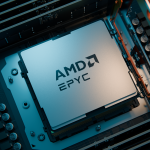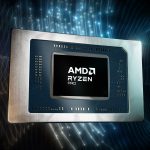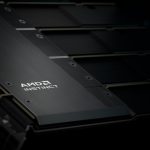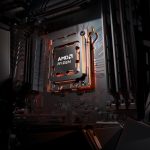
- AI chip market
- GPU
- Semiconductors
OpenAI and AMD: A $100 Billion Realignment of AI Dominance
6 minute read

The landmark OpenAI–AMD alliance reshapes the global balance of AI power, challenging Nvidia’s supremacy and redefining the semiconductor order.
Key Takeaways
AMD has secured a landmark commitment from OpenAI to deploy up to 6 gigawatts of its Instinct GPUs over five years—potentially worth tens of billions in revenue—beginning with its MI450 chip in late 2026, a scale rivaling the energy consumption of a mid-sized American city.
In an unprecedented equity arrangement, OpenAI receives warrants for up to 160 million AMD shares at a nominal strike price, vesting only if the company hits deployment milestones and its stock reaches $600—a structure that aligns incentives without immediate dilution while effectively making OpenAI a stakeholder in AMD’s success.
The partnership, bankrolled by OpenAI’s recent $100 billion investment from Nvidia, signals a strategic diversification that threatens to crack Nvidia’s near-monopoly in AI chips, with AMD shares surging 25% and adding over $50 billion in market value while Nvidia slipped 2% on the news.
A New Frontier in Silicon Diplomacy
In the cutthroat world of artificial intelligence infrastructure, where computational power has become as strategic as oil reserves, a seismic shift occurred on October 6, 2025. Advanced Micro Devices and OpenAI announced a partnership that transcends conventional supplier relationships, committing the AI laboratory to deploy AMD processors at a scale that would power hundreds of thousands of data center racks.
The agreement arrives at a pivotal moment. OpenAI, flush with a $100 billion equity infusion from Nvidia announced last month, is deploying that capital to diversify its silicon supply chain amid an industry-wide shortage of specialized AI chips. For AMD, long relegated to runner-up status behind Nvidia’s dominance of 80-90% of the AI accelerator market, the deal represents validation of years spent developing its ROCm software ecosystem and high-performance GPU architectures.
But this transaction carries implications beyond procurement contracts and revenue projections. It signals the maturation of an AI ecosystem where collaboration may prove more durable than monopoly, and where the race toward artificial general intelligence is reshaping not merely technology giants but the global balance of computational power.
The Architecture of the Deal
The five-year agreement spans multiple generations of AMD’s Instinct GPU family, beginning with the MI450 series scheduled for deployment in the latter half of 2026. OpenAI will integrate these processors into its next-generation infrastructure, either through direct purchases or via cloud partnerships, to power increasingly sophisticated AI models that push the boundaries of reasoning and multimodal understanding.
The initial deployment of 1 gigawatt alone translates to approximately 200,000 GPUs based on current power densities. The full 6-gigawatt commitment scales to well over a million processors—an order of magnitude that positions AMD as a cornerstone supplier rather than a secondary option.
The equity component distinguishes this deal from typical procurement agreements. AMD has granted OpenAI warrants for up to 160 million shares—potentially representing 10% of outstanding stock—at a $0.01 strike price. These vest progressively based on deployment thresholds ranging from 1 to 6 gigawatts, contingent on AMD’s stock price reaching $600 per share and OpenAI achieving seamless technical integration. Exercisable through 2030, the structure defers dilution while ensuring both parties share in the upside of success.
“This partnership will generate tens of billions of dollars in revenue while proving highly accretive to earnings,” AMD’s chief financial officer Jean Hu said in a statement, carefully avoiding specific figures that might constrain the company’s quarterly guidance.
The collaboration builds on OpenAI’s prior testing of AMD’s MI300X and MI350X accelerators but elevates the relationship to strategic importance. Sam Altman, OpenAI’s co-founder and chief executive, framed the partnership as essential to “building the compute capacity needed to realize AI’s full potential.” Lisa Su, AMD’s chief executive, characterized it as a “true win-win” that would “advance the entire AI ecosystem” by combining her company’s systems expertise with OpenAI’s generative breakthroughs.

Market Upheaval
Wall Street’s response proved swift and dramatic. AMD’s stock surged 25% in premarket trading to breach $205—its highest level since the 2021 technology peak—adding more than $50 billion to the company’s market capitalization within hours and propelling it past $330 billion in total value. The rally reflects investor conviction that AMD has secured validation from a marquee customer whose computational demands dwarf those of conventional hyperscale cloud providers.
Nvidia, the incumbent leader in AI accelerators, absorbed a modest but symbolically significant blow as shares declined 2% to approximately $184 from Friday’s close of $187.62. While hardly catastrophic, the pullback underscores growing anxiety that the company’s formidable moat—built on software lock-in through its CUDA platform and manufacturing scale—may erode as credible alternatives emerge.
Taiwan Semiconductor Manufacturing Co., which fabricates chips for both AMD and Nvidia, rose 1.2% to $192 on expectations of surging orders for advanced process nodes and high-bandwidth memory critical to next-generation AI processors. The gains rippled through the semiconductor supply chain: Intel climbed 1.5% on hopes of broader ecosystem benefits, while memory manufacturers Micron and SK Hynix advanced 0.8% and 1.1% respectively amid projections that demand for specialized high-bandwidth memory could jump 50% in the coming year.
The broader implications extend across a global AI chip market that research firm McKinsey projects will reach $400 billion by 2027. OpenAI’s decision to deploy capital from its Nvidia windfall toward AMD signals a fundamental recalibration in procurement strategy. As data center power capacity becomes constrained by electrical grids and regulatory limits, diversifying suppliers mitigates bottlenecks that have stalled AI development projects across the industry.
For chip manufacturers like TSMC and Samsung, the deal portends intensified orders for cutting-edge packaging technologies and high-bandwidth memory, potentially straining already tight capacity. End customers—from well-funded startups to sovereign wealth funds building national AI capabilities—may eventually benefit from pricing pressure as competition intensifies, though near-term premiums are likely to persist given supply constraints.
The energy dimension looms large. Six gigawatts approximates the output of several large nuclear reactors, amplifying concerns about the sustainability of AI’s computational ambitions. The agreement could accelerate investments in carbon-free power sources, particularly as OpenAI’s separate $500 billion Stargate supercomputing initiative explores hybrid architectures combining multiple chip vendors.
Strategic Calculations
OpenAI’s ability to fund this massive procurement stems directly from Nvidia’s $100 billion equity investment, which valued the AI laboratory at $500 billion and earmarked capital for infrastructure investments in pursuit of artificial general intelligence. Yet Nvidia’s stake, announced just weeks ago, was hardly altruistic—it secures continued demand for the company’s H100 and forthcoming Blackwell processors while potentially deflecting antitrust scrutiny over market concentration.
By allocating a substantial portion—industry observers estimate 10-20% of the Nvidia proceeds—to AMD, OpenAI hedges against single-supplier risk at a moment when lead times for advanced AI chips stretch into 2027. This diversification provides operational flexibility as frontier AI models demand petascale computational throughput measured in quintillions of calculations per second.
While Nvidia’s CUDA software ecosystem remains the industry standard, AMD’s open-source ROCm platform is narrowing the gap in functionality and ease of use. Success in deploying AMD chips at scale could enable OpenAI to port AI models across vendors, fostering a Linux-like standardization that lowers barriers for competitors including Anthropic and xAI. However, execution risks remain substantial: integration challenges could delay deployments, and if the MI450 underperforms on inference efficiency—the rapid generation of AI outputs—OpenAI might gravitate back toward Nvidia’s proven architecture.
For AMD, the partnership cements its strategic pivot from consumer processors to enterprise artificial intelligence, where profit margins significantly exceed legacy business segments. The warrant structure proves particularly astute, effectively converting OpenAI into an advocate whose financial returns depend on AMD’s stock appreciation. This “compute-for-equity” model could inspire similar arrangements, blurring traditional boundaries between suppliers and customers in an increasingly circular economy of silicon, cloud services, and capital.
Nvidia faces the most acute competitive pressure. Its advantages—deep software integration and manufacturing scale—confront erosion as AMD demonstrates viability at exascale deployments. The company will likely respond with aggressive pricing or enhanced ecosystem incentives, but the emergence of a credible duopoly invites additional entrants including Intel’s Gaudi accelerators and Broadcom’s custom application-specific integrated circuits.
Geopolitically, the deal democratizes access to cutting-edge AI infrastructure. Nations seeking to build sovereign cloud capabilities now have viable alternatives to U.S.-centric supply chains, potentially reshaping the global distribution of computational power.
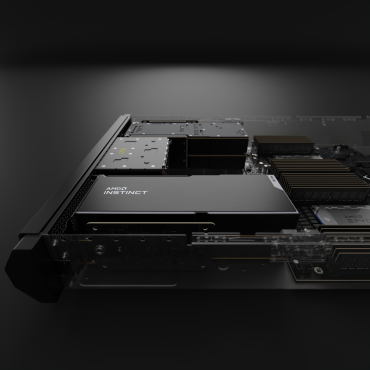
Analytical Perspectives
Industry analysts have responded with measured enthusiasm tempered by execution concerns. Patrick Moorhead of Moor Insights & Strategy characterized the agreement as “a breakthrough achievement for AMD,” noting that the binding 6-gigawatt commitment contrasts sharply with Nvidia’s more ambiguous “planned” 10-gigawatt arrangement with OpenAI. “This transforms AMD from a speculative alternative to a validated tier-one provider,” Moorhead argued, predicting broader enterprise adoption as OpenAI’s endorsement validates the ROCm software stack.
Dan Ives of Wedbush Securities estimated the deal’s revenue potential at $80 billion to $100 billion over five years, upgrading AMD to outperform with a $250 price target. He described the partnership as evidence of “AI’s golden handcuffs loosening on Nvidia.”
The numbers underscore the stakes involved. AMD’s data center revenue has quadrupled to $12.6 billion over the past year, yet remains dwarfed by Nvidia’s $60 billion in quarterly sales. OpenAI’s own financial trajectory—$4.3 billion in revenue during the first half of 2025 against $2.5 billion in losses, according to The Information—demands ruthless cost efficiency even as the company pursues computationally intensive breakthroughs.
Leaked specifications suggest the MI450 will rival Nvidia’s Blackwell architecture on training throughput while consuming 20% less energy per computation—a critical advantage given power constraints. However, AMD’s processors reportedly draw 1,200 watts each compared to Blackwell’s 1,000 watts, creating higher cooling requirements that could complicate data center design.
The warrant structure’s novelty has drawn particular attention, vesting only if AMD’s stock triples from current levels to $600 per share. Skeptics including Barclays analyst Tom O’Malley caution about “execution alpha,” warning that AMD must navigate high-bandwidth memory shortages that have constrained production across the industry.
Implications and Uncertainties
This AMD-OpenAI alliance marks an inflection point in artificial intelligence infrastructure, where computational demands are forcing collaboration across traditional competitive boundaries. For OpenAI, the partnership represents a pragmatic pursuit of computational abundance, bankrolled by Nvidia’s capital but aimed at reducing dependence on any single supplier. AMD emerges emboldened, its perennial underdog narrative yielding to legitimate contender status. Nvidia, while retaining technological leadership, must now defend market share amid eroding exclusivity, even as foundries like TSMC benefit from surging demand across multiple customers.
The deeper significance lies in fostering ecosystem resilience. As artificial intelligence permeates global economies—PwC projects AI will contribute $15.7 trillion to worldwide GDP by 2030—this deal encourages competition that spurs innovation without fragmenting standards. Substantial challenges remain: geopolitical tensions over semiconductor supply chains, ethical questions surrounding AGI development, and the carbon footprint of exascale computational ambitions that could offset progress in other sectors.
Yet if executed successfully, October 6, 2025, may be remembered not merely as a commercial transaction but as the beginning of a more distributed AI era—one where computational power, quite literally, is no longer concentrated in the hands of a single dominant provider. Whether that vision materializes depends on AMD’s ability to deliver on aggressive performance promises, OpenAI’s skill in integrating diverse hardware platforms, and the broader industry’s willingness to embrace architectural diversity over the comfortable lock-in of a single vendor’s ecosystem.
The chip wars, it seems, have entered a new phase—one where alliances may prove as important as transistor counts.
